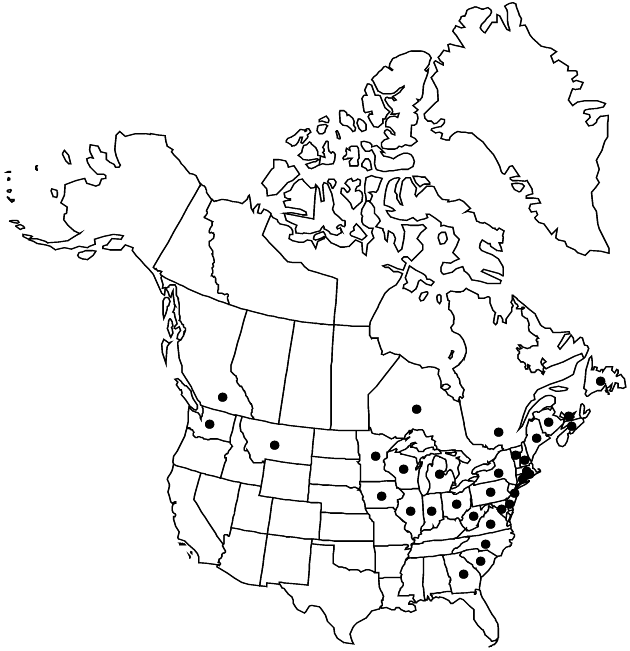Difference between revisions of "Hieracium piloselloides"
Prosp. Hist. Pl. Dauphiné, 34. 1779.
FNA>Volume Importer |
imported>Volume Importer |
||
| Line 8: | Line 8: | ||
}} | }} | ||
|common_names=King devil;épervière des Florentins | |common_names=King devil;épervière des Florentins | ||
| + | |special_status={{Treatment/ID/Special_status | ||
| + | |code=I | ||
| + | |label=Introduced | ||
| + | }} | ||
|basionyms= | |basionyms= | ||
|synonyms={{Treatment/ID/Synonym | |synonyms={{Treatment/ID/Synonym | ||
| Line 32: | Line 36: | ||
|elevation=10–300(–1500) m | |elevation=10–300(–1500) m | ||
|distribution=B.C.;N.B.;Nfld. and Labr. (Nfld.);N.S.;Ont.;P.E.I.;Que.;Conn.;Del.;Ga.;Ill.;Ind.;Iowa;Maine;Md.;Mass.;Mich.;Minn.;Mont.;N.H.;N.J.;N.Y.;N.C.;Ohio;Pa.;R.I.;S.C.;Vt.;Va.;Wash.;W.Va.;Wis.;Europe. | |distribution=B.C.;N.B.;Nfld. and Labr. (Nfld.);N.S.;Ont.;P.E.I.;Que.;Conn.;Del.;Ga.;Ill.;Ind.;Iowa;Maine;Md.;Mass.;Mich.;Minn.;Mont.;N.H.;N.J.;N.Y.;N.C.;Ohio;Pa.;R.I.;S.C.;Vt.;Va.;Wash.;W.Va.;Wis.;Europe. | ||
| + | |introduced=true | ||
|discussion=<p>Plants called <i>Hieracium</i> praealtum Villars ex Gochnat (at least those called H. praealtum <i></i>var.<i> decipiens</i> W. D. J. Koch) reputedly differ from members of <i>H. piloselloides</i> in having blades of their proximal leaves stellate-pubescent abaxially (M. L. Fernald 1950); such plants may be found in the flora and may merit taxonomic recognition.</p> | |discussion=<p>Plants called <i>Hieracium</i> praealtum Villars ex Gochnat (at least those called H. praealtum <i></i>var.<i> decipiens</i> W. D. J. Koch) reputedly differ from members of <i>H. piloselloides</i> in having blades of their proximal leaves stellate-pubescent abaxially (M. L. Fernald 1950); such plants may be found in the flora and may merit taxonomic recognition.</p> | ||
|tables= | |tables= | ||
| Line 55: | Line 60: | ||
|publication title=Prosp. Hist. Pl. Dauphiné, | |publication title=Prosp. Hist. Pl. Dauphiné, | ||
|publication year=1779 | |publication year=1779 | ||
| − | |special status= | + | |special status=Introduced |
| − | |source xml=https:// | + | |source xml=https://bibilujan@bitbucket.org/aafc-mbb/fna-data-curation.git/src/bb6b7e3a7de7d3b7888a1ad48c7fd8f5c722d8d6/coarse_grained_fna_xml/V19-20-21/V19_393.xml |
|tribe=Asteraceae tribe Cichorieae | |tribe=Asteraceae tribe Cichorieae | ||
|genus=Hieracium | |genus=Hieracium | ||
Revision as of 20:37, 27 May 2020
Plants 15–40(–70+) cm. Stems proximally usually piloso-hirsute (hairs 2–4+ mm), rarely glabrous, distally usually glabrous, sometimes piloso-hirsute (hairs 1–3+ mm), stellate-pubescent, and/or stipitate-glandular. Leaves: basal 3–8(–20+), cauline 0–2(–4+); blades oblanceolate to lanceolate, 30–100(–150+) × 8–20+ mm, lengths 2.5–8+ times widths, bases cuneate, margins entire or denticulate, apices rounded to acute, faces glabrous or piloso-hirsute (on midribs and at margins, hairs 1–4+ mm). Heads (3–)10–30+ in subumbelliform or corymbiform arrays. Peduncles piloso-hirsute (hairs 1–2+ mm), stellate-pubescent, and stipitate-glandular. Calyculi: bractlets 3–12+. Involucres campanulate, 5–7 mm. Phyllaries 12–18+, apices acute to acuminate, abaxial faces piloso-hirsute (hairs 0.5–1.5+), stellate-pubescent, and stipitate-glandular. Florets (40–)60–80+; corollas yellow, 6–9 mm. Cypselae columnar, 1.5–2 mm; pappi of 25–40+,white bristles in 1 series, 3–4 mm.
Phenology: Flowering (May–)Jun–Aug(–Sep).
Habitat: Disturbed sites
Elevation: 10–300(–1500) m
Distribution

Introduced; B.C., N.B., Nfld. and Labr. (Nfld.), N.S., Ont., P.E.I., Que., Conn., Del., Ga., Ill., Ind., Iowa, Maine, Md., Mass., Mich., Minn., Mont., N.H., N.J., N.Y., N.C., Ohio, Pa., R.I., S.C., Vt., Va., Wash., W.Va., Wis., Europe.
Discussion
Plants called Hieracium praealtum Villars ex Gochnat (at least those called H. praealtum var. decipiens W. D. J. Koch) reputedly differ from members of H. piloselloides in having blades of their proximal leaves stellate-pubescent abaxially (M. L. Fernald 1950); such plants may be found in the flora and may merit taxonomic recognition.
Selected References
None.